Recent Articles
Popular Makes
Body Types
2017 RAM Power Wagon vs 2017 Ford Raptor: Which is Best?
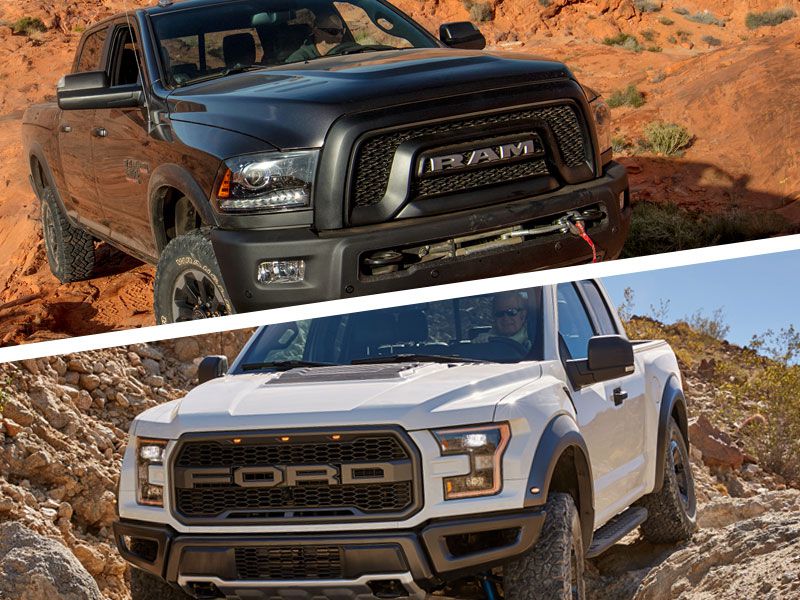
2017 RAM Power Wagon vs 2017 Ford Raptor
Whether at work or play, today’s four-wheel-drive pickups are engineered to get the crew out and back in total comfort in the most extreme conditions. With the ability to tackle any terrain, high-end off-road pickups deliver a compelling combination of capability, technology, and luxury.
The Ford F-150 Raptor returns for the 2017 model year as a fully re-engineered truck, after a two-year hiatus. The Ram Power Wagon has been in constant production since 2005, with roots that run all the way back to World War II. While intents, audiences, classes, and technologies differ, the Raptor and Power Wagon are the biggest, baddest dogs on the block. In this article, we’ll pit a half-ton 2017 Ford F-150 Raptor SuperCrew ($52,250) against a three-quarter-ton Ram 2500 Power Wagon Crew Cab ($51,695).
Styling Druthers
The 2017 Ford F-150 Raptor and Ram Power Wagon both feature aggressive exterior styling. Offered in Super Cab and Super Crew configurations, the Raptor trumpets its wide stance with five indicator lights strung across the front facia tipping off the truck’s width. Distressed RAPTOR graphics on the cargo bed might not appeal to all tastes, but the beefy fender flairs (which contain the aggressive BF Goodrich tires) are quite tasty. The Power Wagon’s exterior design is more retro. The big and bold vertical graphic stripe on the Power Wagon’s cargo bed harkens back to the 1970s and sets the truck apart from commonplace 2500s. Winner: Raptor
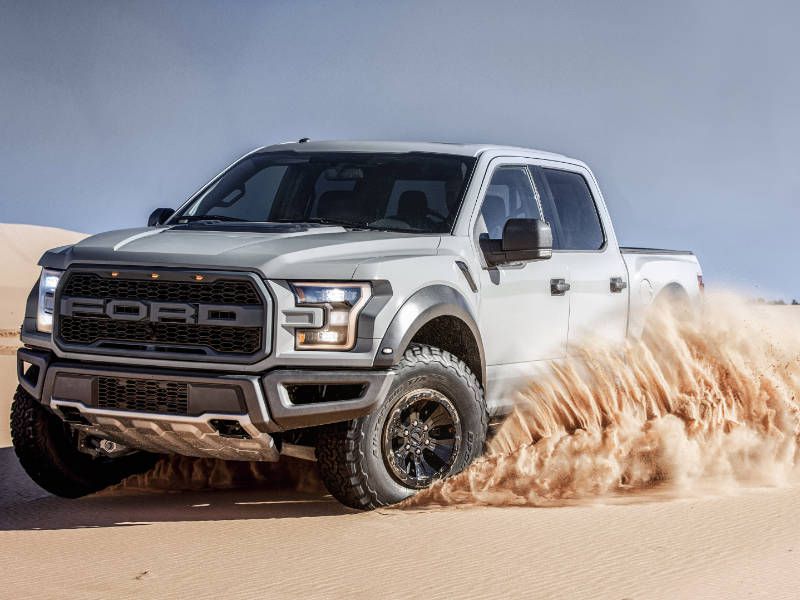
Photo by Ford
Your Cabin in the Pines …
Both the Raptor and Power Wagon offer roomy and comfortable cabins with all the modern amenities. The Raptor crew’s cabin accommodates five people. The front bucket seats are divided by a flow-through console and floor shifter. The Raptor’s rear seat provides 40.4 inches of headroom, 43.6 inches of legroom, and 65.9 inches of shoulder room. The Power Wagon’s flip down front bench seating allows the truck to accommodate six people. The rear seat provides 39.9 inches of headroom, 40.3 inches of legroom, and 65.7 inches of shoulder room. While the Raptor has more room in the back seat, the Power Wagon’s ability to carry one more person gives it the edge. Advantage: Power Wagon

Photo by Ram Trucks
In-Cabin Technology Wars
The Raptor’s 801A option group ($3,160) includes an eight-inch touchscreen SYNC 3 infotainment system, with support for Apple CarPlay and Android Auto, leather upholstery, and heated power front buckets with power lumbar. The 802A option group ($9,345) adds a long list of technology, including 360-degree cameras with split-view display (which comes in handy for rock crawling), Pro-Trailer Backup Assist, and LED side mirror spotlights. An 110-volt/400-watt Power Inverter is standard. The Power Wagon’s Leather and Luxury option group ($4,995) includes an 8.4-inch touchscreen infotainment system that pumps out the tunes to a nine-speaker Alpine audio system (with subwoofer). The leather-upholstered front seats include heating and ventilation, along with power lumbar support and driver seat memory. Advantage: Raptor (if you need the tech and can spare the dough)

Photo by Ford
Engines and Transmissions
The 2017 Raptor’s 3.5-liter EcoBoost V6 cranks out an impressive 450 HP and 510 pound-feet of torque. An advanced ten-speed automatic transmission enables an EPA fuel economy rating of 15 city / 18 highway miles per gallon. The 2017 Power Wagon’s 6.4-liter HEMI V8 uses cylinder deactivation to improve highway fuel economy while delivering 410 HP and 429 pound-feet of torque. The HEMI V8’s mated to a conventional six-speed automatic transmission. (The EPA does not publish fuel economy ratings for three-quarter ton trucks.) When it comes to high-performance off-road trucks, there is a replacement for displacement. Worth noting: while the Raptor has the clear advantage in horsepower and torque, it’s engineered to run on premium gasoline. The Power Wagon gets by with regular gasoline. Advantage: Raptor.
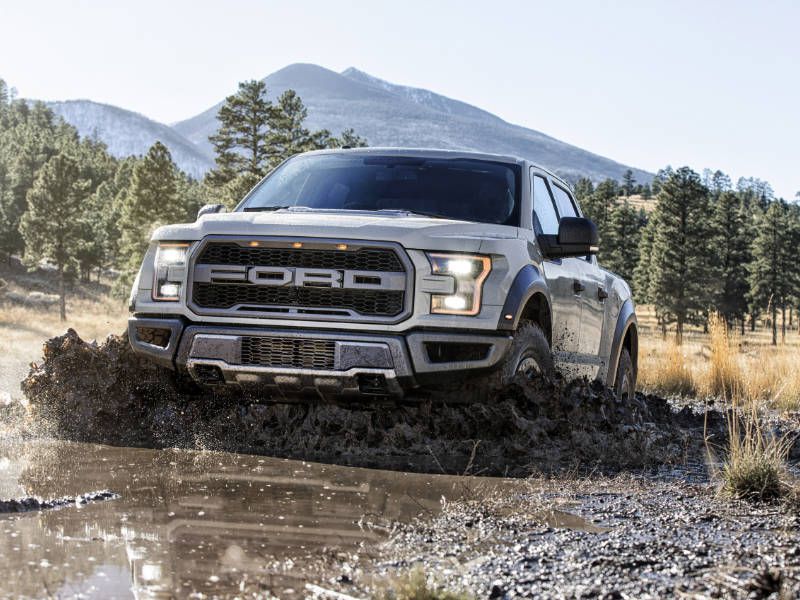
Photo by Ford
Suspension vs Suspension
The Raptor and Power Wagon have the toughest suspensions in their respective classes. The Raptor uses conventional leaf springs and rides on FOX shocks. It boasts 13 inches of suspension travel up front and 13.9 inches out back while providing a front approach angle of 30 degrees, a break over angle of 22 degrees, and a departure angle of 23 degrees. The Power Wagon rides on rear coils and is fitted with Bilstein shocks all around. A segment-exclusive front axle sway bar disconnect system allows for extreme articulation. With an approach angle of 33.6 degrees, break over angle of 23.5 degrees, and departure angle of 26.2 degrees, the Power Wagon is built to cruise through the toughest trails. Advantage: Toss-up.
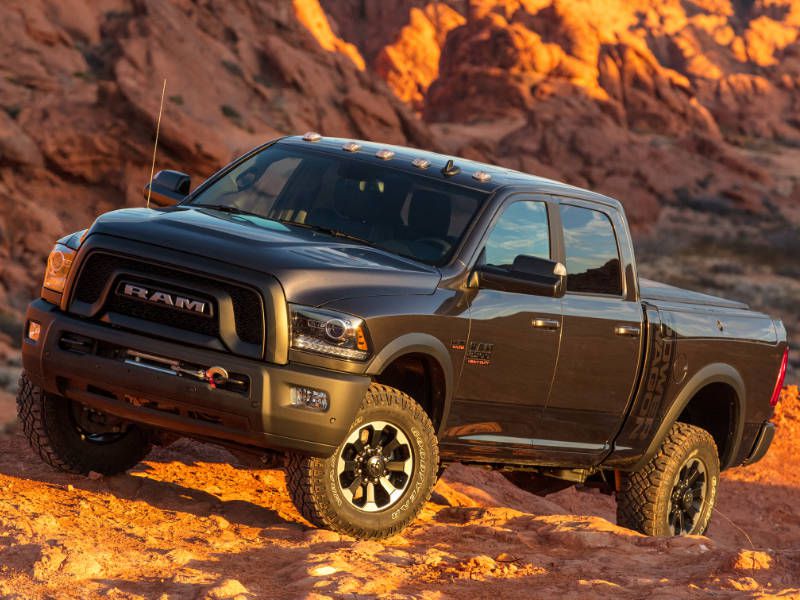
Photo by Ram Trucks
Ride and Handling Contest
While both the Raptor and Power Wagon are pleasant to drive and composed on the street, the Raptor is surprisingly nimble and handles better than any full-size 4x4 pickup on paved roads. The Raptor rides on BF Goodrich All-Terrain T/A KO2 tires that have been specifically designed for the truck. They deliver a winning combination of performance in all conditions. The Power Wagon is fitted with T285/70R17 Goodyear Wrangler Duratrac tires. They’re marvelous off road, but not as supple as the Raptor’s KO2s on the pavement. Advantage: Raptor
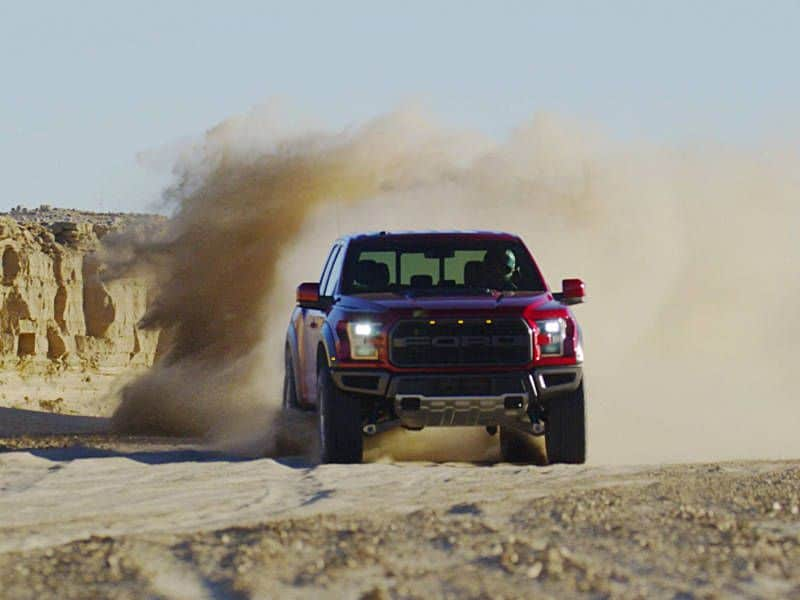
Photo by Ford
4x4 Capabilities and Features
Both the Raptor and Power Wagon are equipped with Hill Descent Control. Press a button, set your speed, keep your feet off the pedals and let the machine do all the work for you. The Raptor is equipped with an advanced transfer case that provides six different drive modes (Normal, Sport, Weather, Rock, Sand, and Mud), ensuring confidence on all road surfaces. While high-speed desert running is the Raptor-exclusive forte, it’s remarkably capable on the rocks. The Power Wagon is a trusty workhorse, with Tru-Lok front and rear electronic locking differentials. The Ram Articulink suspension and disconnecting sway bar allow for extreme articulation. The standard 12,000 pound Warn winch set it apart from the crowd. No other pickup truck comes with a front winch as standard equipment. Toss Up: Desert running your thing? It’s the Raptor, hand’s down. Need a mighty workhorse? Opt for the Power Wagon.
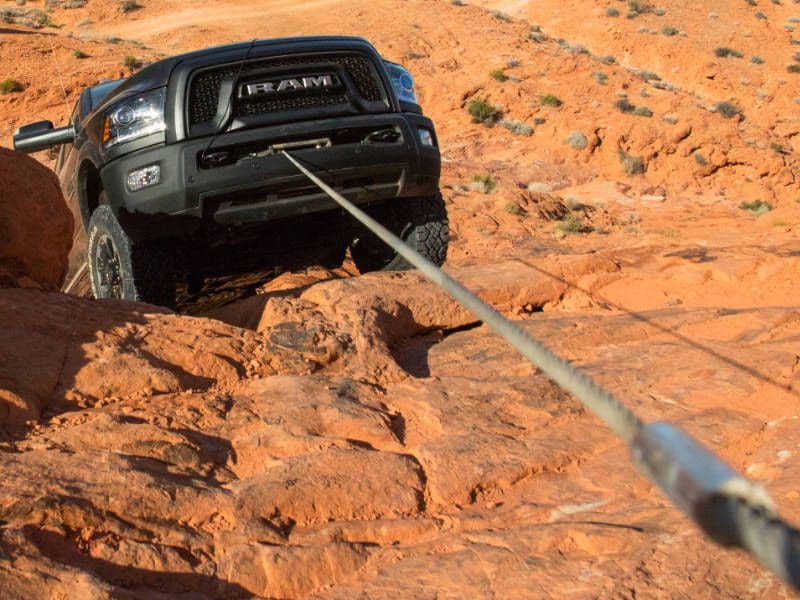
Photo by Ram Trucks
Hauling Wars
The 2017 Ram Power Wagon has a 1,470-pound payload rating and a 9,910-pound towing capacity. The optional RamBox cargo management system ($1,295) provides locking side storage compartments on the cargo bed, along with a cargo bed divider/extender and LED bed lighting. Ram Boxes come in handy for carrying everything from tools to rescue supplies. They’re dandy beverage coolers, as well. The 2017 Raptor has a 1,200-pound payload rating and an 8,000-pound towing capacity. To be fair, the Raptor isn’t intended to be a tow vehicle. Advantage: Power Wagon
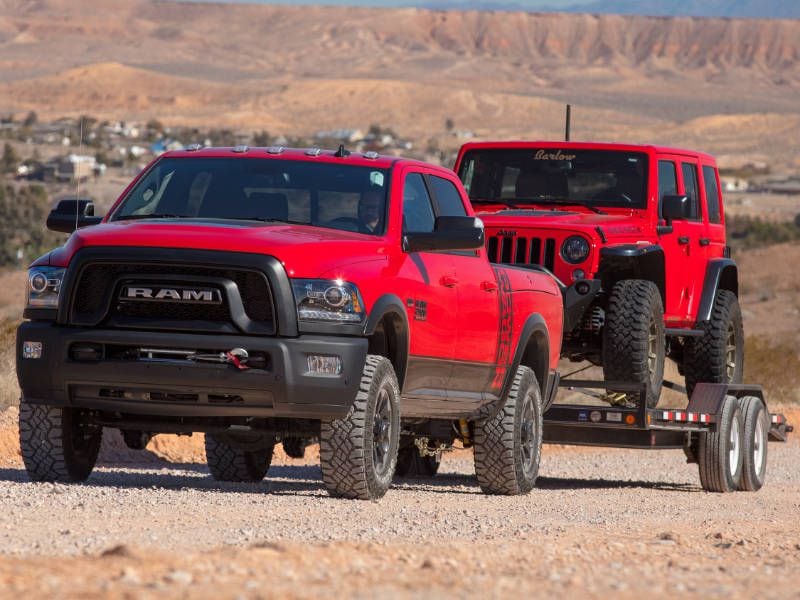
Photo by Ram Trucks
Safety Comparison
The Raptor Technology option package ($1,950) includes active lane keep and lane departure warning, adaptive cruise control (with collision mitigation), rain-sensing wipers, and automatic high beams. Blind spot mirrors and rear cross traffic alert are included in the 802A group. While the Power Wagon lacks the Raptor’s full array of high-end safety technology, the Convenience option group ($395) includes automatic high beams and rain sensitive wipers. Advantage: Raptor

Photo by Ford
Which Best Truck Wins?
If you have forty miles of bad road to travel, the Ford F-150 Raptor and Ram PowerWagon are both trusty steeds. Each has a different purpose and takes a unique approach, starting with the drivetrain. The Raptor’s turbocharged V6, ten-speed transmission, and high-degree of technology set it apart from the more traditional HEMI V8 PowerWagon, but the Raptor’s penchant for premium fuel will cost more at the pump each week. The more you drive, the bigger the sting. So what’s the best truck? Is it about fun, or getting it done? If your dream ride is a high-speed desert truck with serious rock crawling capabilities, and excellent road manners, the Raptor is in a class of its own. But if your priority is work rather than play, the Power Wagon is the workhorse of choice, right off the dealer lot.
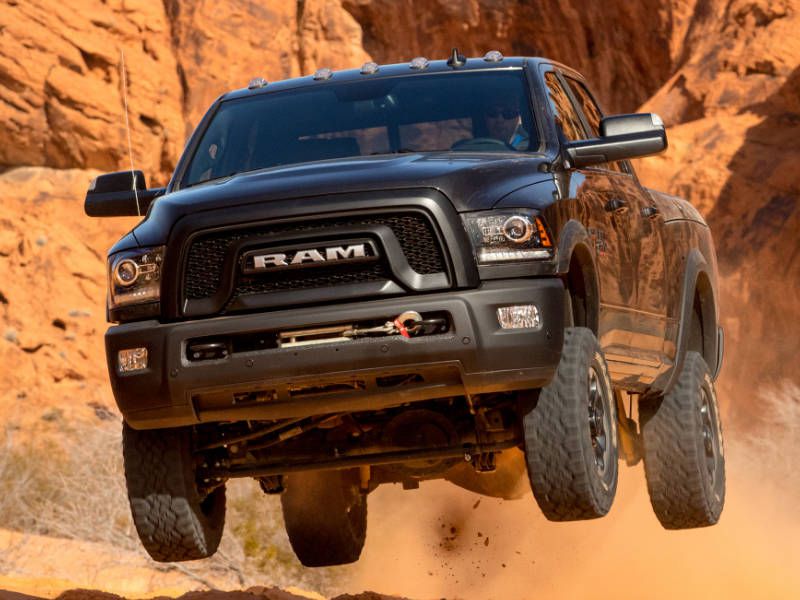
Photo by Ram Trucks